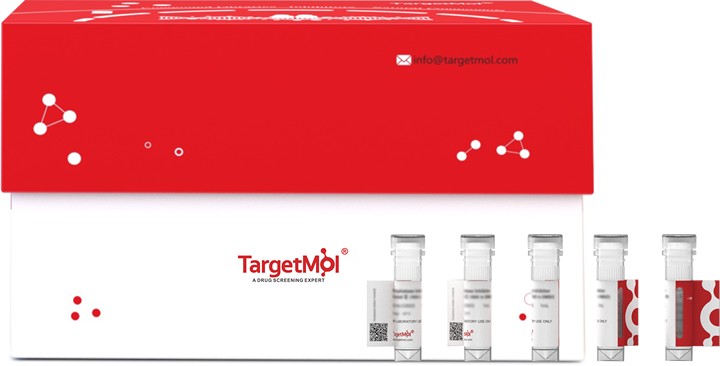 Your shopping cart is currently empty
Your shopping cart is currently empty
BPI Protein, Human, Recombinant (His)
Bactericidal/permeability-increasing protein is a member of the BPI/LBP/Plunc superfamily and BPI/LBP family. It is a cationic protein which can be detected in the azurophilic granule and on the surface of polymorphonuclear leukocytes. Bactericidal/permeability-increasing protein also is a lipopolysaccharide binding protein. It is associated with human neutrophil granules and has bactericidal activity on gram-negative organisms. Bactericidal/permeability-increasing protein contains two domains that adopt the same structural fold, even though they have little sequence similarity. It binds to and neutralises lipopolysaccharides from the outer membrane of Gram-negative bacteria. The cytotoxic action of bactericidal/permeability-increasing protein is limited to many species of Gram-negative bacteria; this specificity may be explained by a strong affinity of the very basic N-terminal half for the negatively charged lipopolysaccharides that are unique to the Gram-negative bacterial outer envelope.

BPI Protein, Human, Recombinant (His)
| Pack Size | Price | USA Warehouse | Global Warehouse | Quantity |
|---|---|---|---|---|
| 5 μg | $68 | 7-10 days | 7-10 days | |
| 10 μg | $108 | 7-10 days | 7-10 days | |
| 20 μg | $178 | 7-10 days | 7-10 days | |
| 50 μg | $359 | 7-10 days | 7-10 days | |
| 100 μg | $696 | 7-10 days | 7-10 days |
Product Information
| Biological Activity | Activity is not tested. It is theoretically active, but we cannot guarantee it. |
| Description | Bactericidal/permeability-increasing protein is a member of the BPI/LBP/Plunc superfamily and BPI/LBP family. It is a cationic protein which can be detected in the azurophilic granule and on the surface of polymorphonuclear leukocytes. Bactericidal/permeability-increasing protein also is a lipopolysaccharide binding protein. It is associated with human neutrophil granules and has bactericidal activity on gram-negative organisms. Bactericidal/permeability-increasing protein contains two domains that adopt the same structural fold, even though they have little sequence similarity. It binds to and neutralises lipopolysaccharides from the outer membrane of Gram-negative bacteria. The cytotoxic action of bactericidal/permeability-increasing protein is limited to many species of Gram-negative bacteria; this specificity may be explained by a strong affinity of the very basic N-terminal half for the negatively charged lipopolysaccharides that are unique to the Gram-negative bacterial outer envelope. |
| Species | Human |
| Expression System | HEK293 Cells |
| Tag | C-His |
| Accession Number | P17213 |
| Synonyms | rBPI,BPIFD1,bactericidal/permeability-increasing protein |
| Construction | Val32-Lys487 |
| Protein Purity | > 95% as determined by SDS-PAGE |
| Molecular Weight | 51.6 kDa (predicted); 50-60 kDa (reducing conditions) |
| Endotoxin | < 1.0 EU/μg of the protein as determined by the LAL method. |
| Formulation | Lyophilized from a 0.2 μm filtered solution of 4mM HCl. |
| Reconstitution | Reconstitute the lyophilized protein in 4mM HCl. The product concentration should not be less than 100 μg/ml. Before opening, centrifuge the tube to collect powder at the bottom. After adding the reconstitution buffer, avoid vortexing or pipetting for mixing. |
| Stability & Storage | It is recommended to store recombinant proteins at -20°C to -80°C for future use. Lyophilized powders can be stably stored for over 12 months, while liquid products can be stored for 6-12 months at -80°C. For reconstituted protein solutions, the solution can be stored at -20°C to -80°C for at least 3 months. Please avoid multiple freeze-thaw cycles and store products in aliquots. |
| Shipping | In general, Lyophilized powders are shipping with blue ice. |
| Research Background | Bactericidal/permeability-increasing protein is a member of the BPI/LBP/Plunc superfamily and BPI/LBP family. It is a cationic protein which can be detected in the azurophilic granule and on the surface of polymorphonuclear leukocytes. Bactericidal/permeability-increasing protein also is a lipopolysaccharide binding protein. It is associated with human neutrophil granules and has bactericidal activity on gram-negative organisms. Bactericidal/permeability-increasing protein contains two domains that adopt the same structural fold, even though they have little sequence similarity. It binds to and neutralises lipopolysaccharides from the outer membrane of Gram-negative bacteria. The cytotoxic action of bactericidal/permeability-increasing protein is limited to many species of Gram-negative bacteria; this specificity may be explained by a strong affinity of the very basic N-terminal half for the negatively charged lipopolysaccharides that are unique to the Gram-negative bacterial outer envelope. |
Dose Conversion
Calculator
Tech Support
| Size | Quantity | Unit Price | Amount | Operation |
|---|

Copyright © 2015-2025 TargetMol Chemicals Inc. All Rights Reserved.



